We caught up with the brilliant and insightful Bruce Dean a few weeks ago and have shared our conversation below.
Bruce, appreciate you joining us today. The first dollar you earn is always exciting – it’s like the start of a new chapter and so we’d love to hear about the first time you sold or generated revenue from your creative work?
As I mentioned in response to another question, my choice to become an illustrator was rather naive. My art school did not offer classes in illustration or graphic design. In fact, all the classes were essentially classes in the fundamentals of art. I had no idea how to prepare a portfolio. There was no internet at the time (or computers). Essentially, I loved illustrations in magazines and books and thought I might be able to create them.
My portfolio consisted of actual drawings and polaroids of drawings and paintings. I have described it as student-like, but honestly, most student portfolios were far more professional. I understood my lack of experience and what the concerns might be. I selected a few southern California based magazines that I enjoyed reading and made appointments with the art directors .
Once I had an appointment, I bought the most recently published issue. I chose an article from the magazine and re -illustrated it. My idea was to give the art director confidence that I could create an appropriate illustration, and that I could meet a deadline.
My first money earned was with Psychology Today Magazine, which was based in southern California at the time. I believe the art director liked my re-illustration of the article, but I also imagine that he was surprised by the extra effort of creating an illustration for an already published article.


Great, appreciate you sharing that with us. Before we ask you to share more of your insights, can you take a moment to introduce yourself and how you got to where you are today to our readers.
I received my MFA in 1974 from what was then called Otis Art Institute. At that time, Otis was an art academy. First year was spent learning to draw and sculpt the figure, and to paint using four colors, black, white, a specific warm hue and blue. The process of finding our own voices as students followed a significant period of learning the basics in foundation courses. As a graduate student I made both realistic and abstract art. My Master’s show consisted of both.
After graduation I, rather naively, decided to become an illustrator. My presentation was very much that of a student. I had some original drawings that would fit in my portfolio and polaroids of work that was no longer available or too large to carry. Luckily, the art director for Psychology Today Magazine took a risk and hired me to make the first of many illustrations for the magazine That published illustration convinced others to hire me and my career as an illustrator began to flourish. I illustrated dozens of magazines, I did a great deal of work for the National Football League, I illustrated a cover for the Rose Bowl. I created movie posters, a poster for the city of San Francisco. I made ads for various products. I Illustrated a sociology text for universities and a special edition of the Great Gatsby for The Oxford Library of the World’s Great Books. It was very gratifying to see my work in national publications, and to be honored by illustration societies
While enjoying my career as an illustrator for perhaps a dozen years, I continued to make abstract paintings for myself. My abstractions were seen by an art consultant who asked to represent them. They sold well, and she, in turn, found a gallery to represent them. After a short period of balancing the two careers, I left the world of illustration and began making abstract art exclusively for a variety of galleries, for the next 30 plus years. I have participated in a dozen solo shows and scores of group gallery and museum shows, nationally. I have taught Advanced Painting, Life Drawing and Art Exploration at colleges and universities in Los Angeles. My work includes projects funded by grants from the Department of Education and the Foundation for Global Community. For the last 20 years, I have had a live/work space at the Brewery Art Colony and my art (and studio) can be seen at the bi-annual Brewery Artwalk.
In the last six years I have returned to incorporating my illustration skills into my fine art paintings. My work might now be described as realistic and, in some cases, as surrealistic. I find my work evolving and changing far more quickly. The increased trepidation and uncertainty, while daunting, has added a renewed level of absorption.
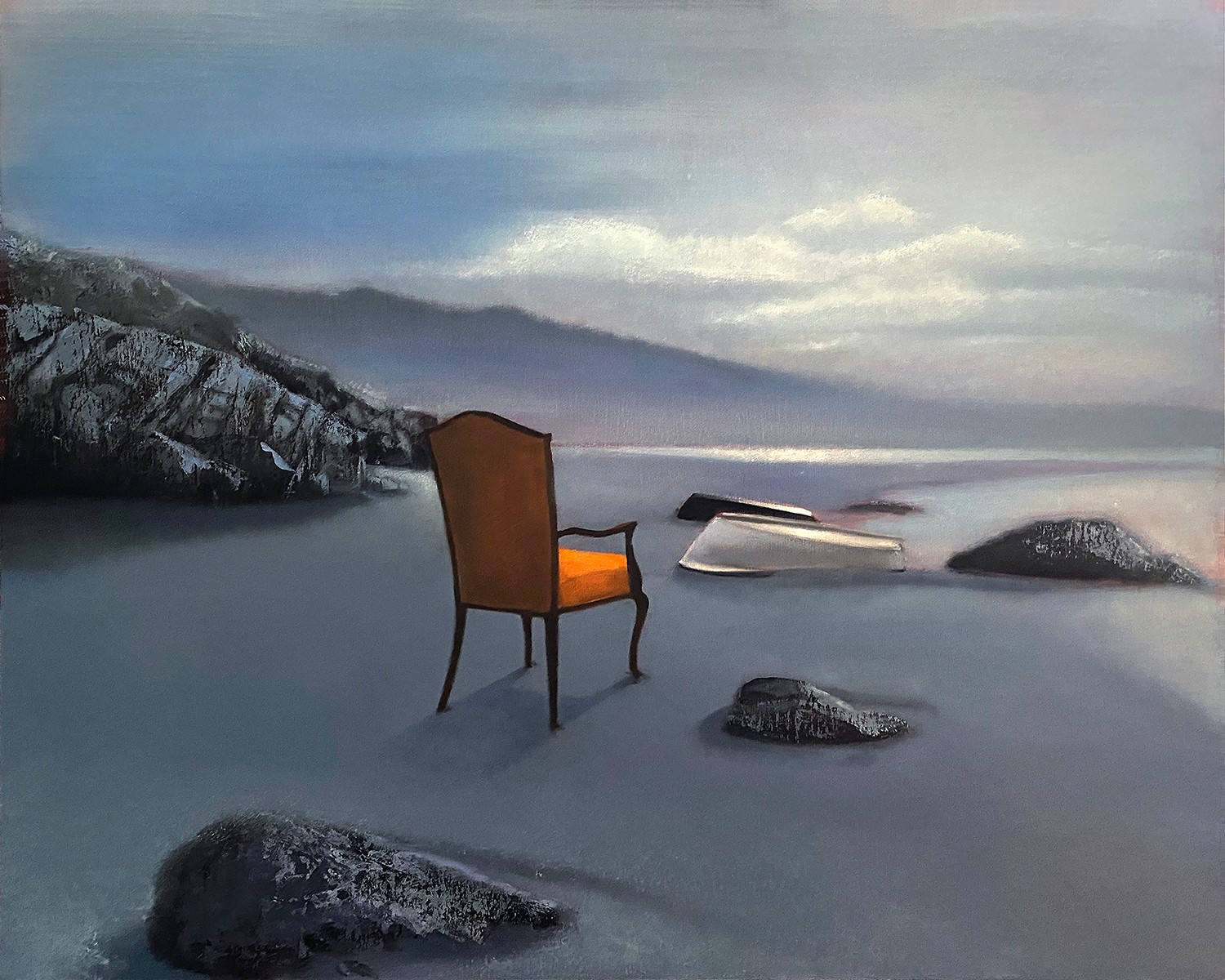
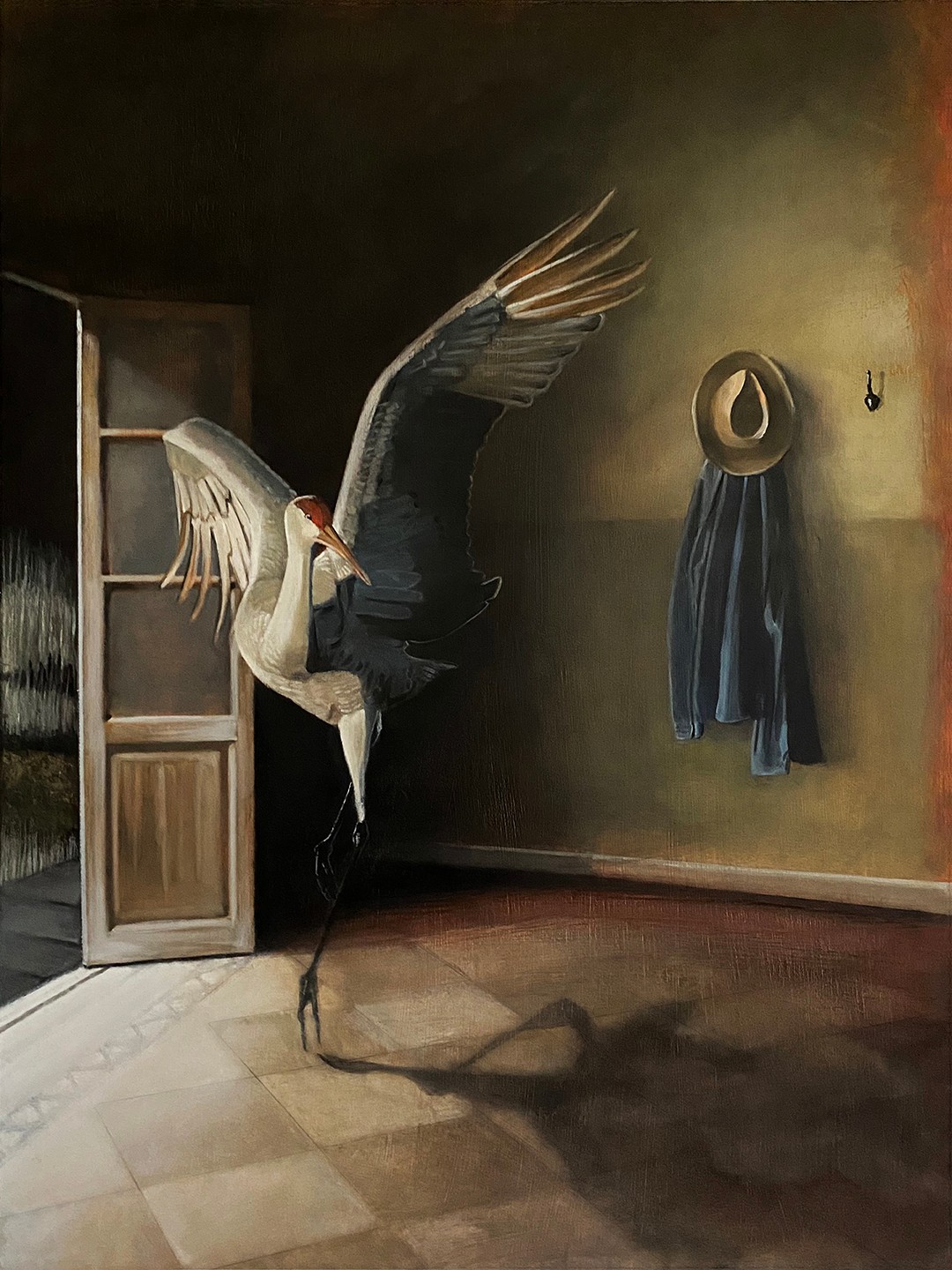
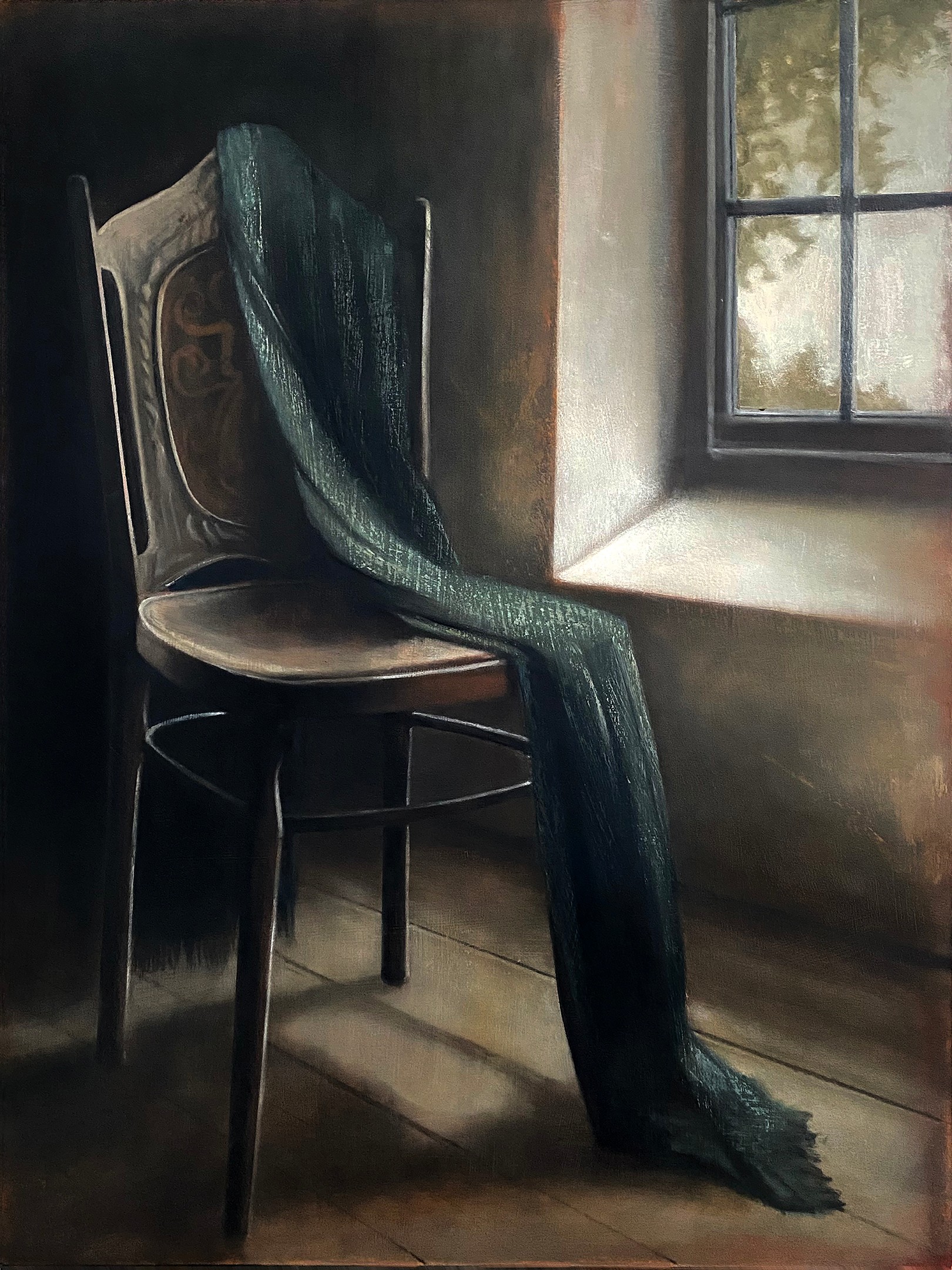
Is there mission driving your creative journey?
Initially, as an illustrator, my goal for every project was to satisfy, and hopefully exceed the expectations of my clients, to engage and draw the viewers into the images, while creating work that was identifiably mine.
Over time, making art that was completely my own, I began to feel a need to understand the point of my artistic journey. I was no longer creating images to illustrate the ideas of others. I felt I was not just making art, employing learned skills, and exhibiting a style, but perhaps identifying who I was, and what I believed in.
Trying to assess how the art I most revered, art that was completely varied in age and style, had moved me, I considered that it touched an aspect in me that felt human, perhaps universal. Applying this idea to my own art manifested in exploring the idea that my aesthetic, at its core, was shared and may, to some extent, have been inherited from our earliest ancestors. When painting, I began making choices that felt as if they came from the most deeply imbedded, truest aspect of my self. My process began to include long periods of staring at the image as it developed, to determine what the next mark, or series of marks should be.
I find this same idea applies to my recent, non-abstract paintings as well. Rather than exploring what is unique, I find myself exploring what is shared.
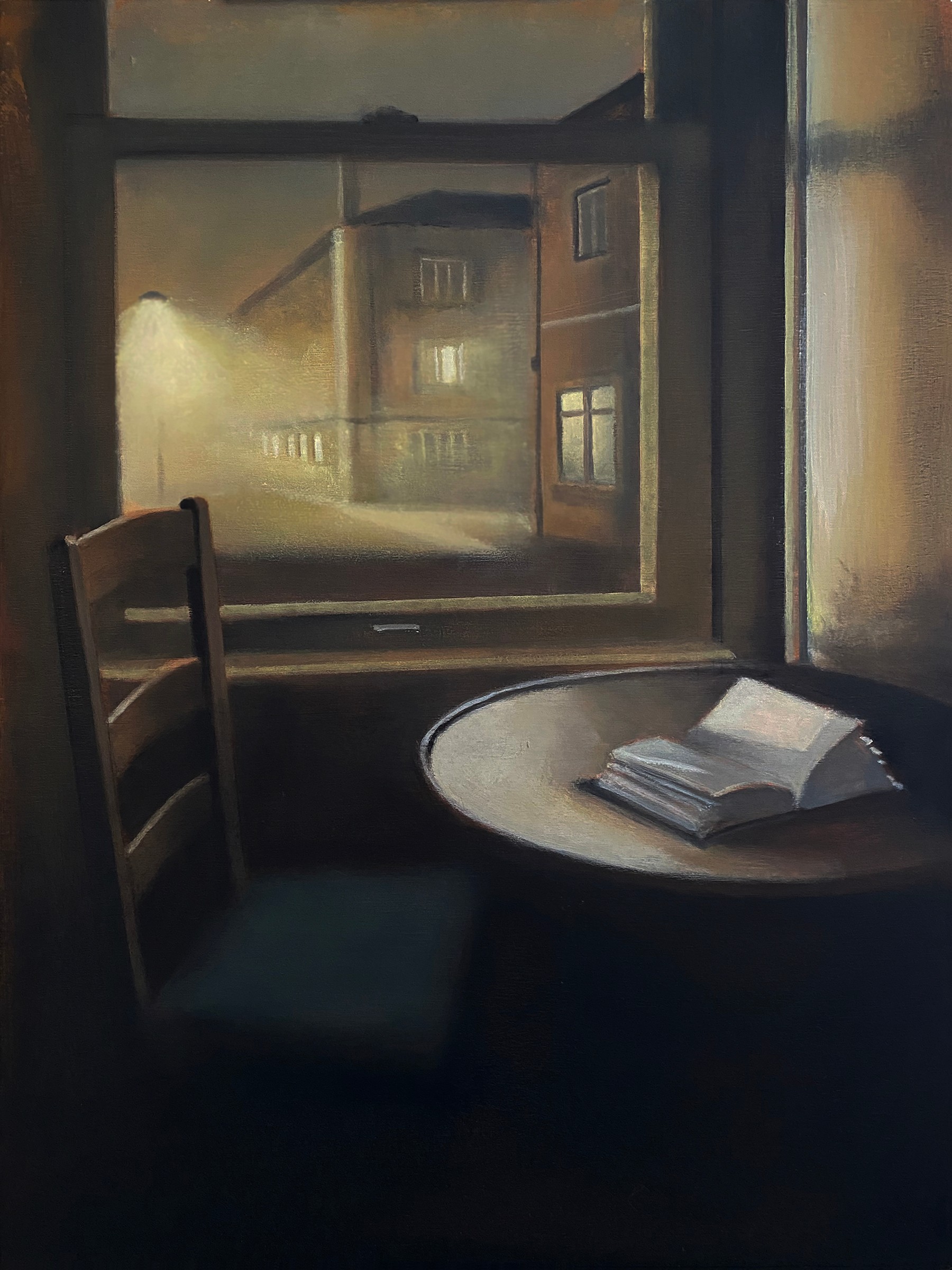
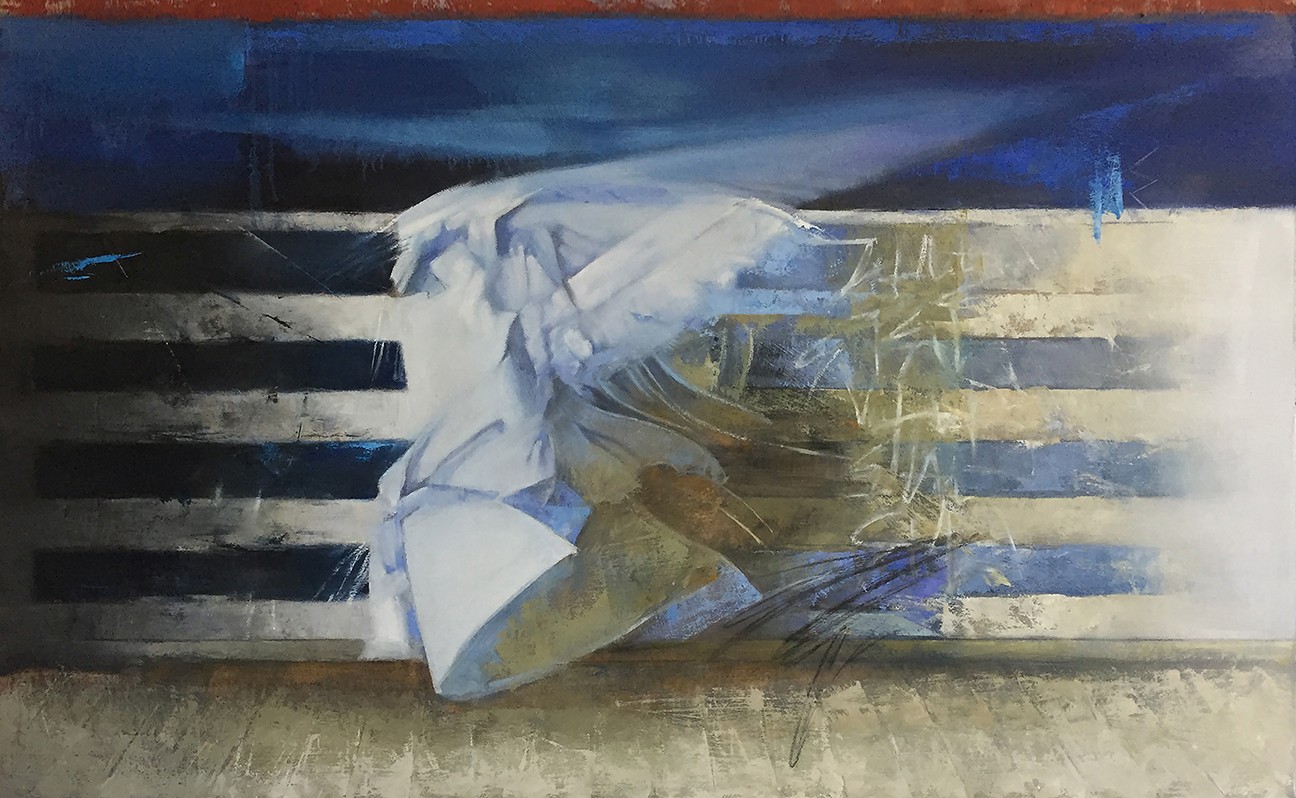
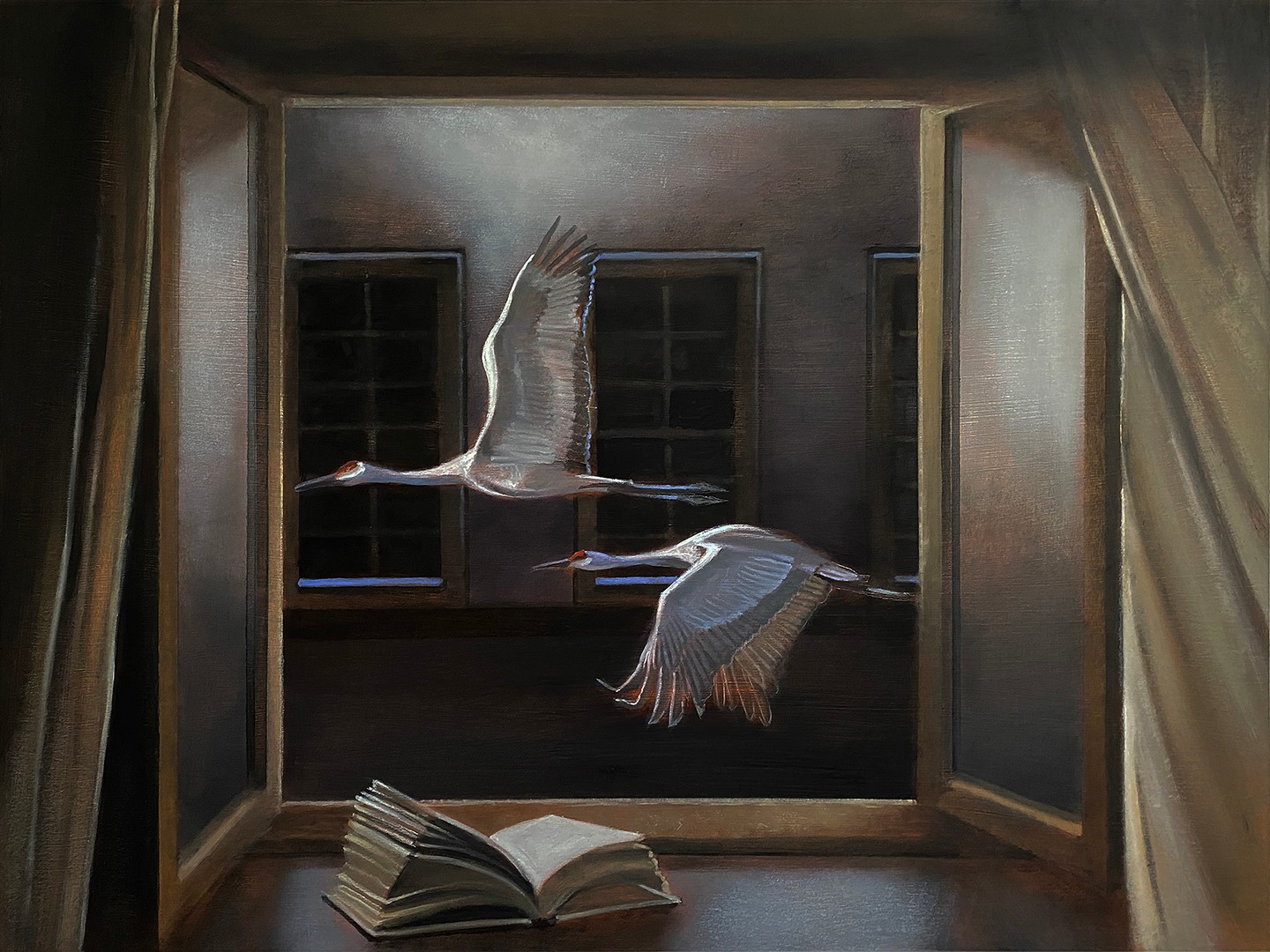
Can you tell us about a time you’ve had to pivot?
At a point when I was feeling my career as an illustrator was advancing better than I had ever anticipated, I received a call from a long time friend who shared the contact information for an art consultant who had selected art for his firm’s offices. I thought perhaps she might be able to sell some of the illustrations I still owned after they had been purchased for one-time use only.
She came to my studio where I had perhaps a dozen or so illustrations of varying sizes and themes, some painted and some pencil drawings. After a very nice introduction and conversation, she took sometime looking at the work; and said, “I really can’t sell these.” While I was somewhat disappointed, my expectations had been low. The idea of receiving another fee for work that I had already been paid for was interesting but not necessary.
She then pointed to something on the studio wall and said, “But I could sell that.” What she had pointed to was a framed abstract piece, that I had painted for my self. Our conversation lasted another hour. I told her I was surprised, interested and eager to follow through.
Over the course of the next year, we kept in touch. I gave her the name and contact information for a close friend with whom I had shared a studio in graduate school. She began selling his work immediately. It took me a year to give her any art. I had made some additional pieces , but for some reason was reluctant to give them up. Perhaps they had become precious, perhaps I was uncertain about my skills in this area. At her urging, I finally gave her the art, she began to sell it immediately. This was not necessarily a function of the quality of the work, it was a manifestation of her skill set: her ability to match the work with a client and a space.
In less than a year, she connected me (and my friend/studio-mate from graduate school) with a new gallery in Santa Monica. I was in a summer group show, and soon after was offered a solo show. The shows were both reviewed in newspapers and magazines. While I was a fairly successful illustrator, I began to imagine a career as a fine artist.
However I was concerned that an artist with two very different art careers would be viewed as not serious in either. I felt the need to choose one or the other. I chose the fine art world. I had learned that as an illustrator, to some degree, I had been able to make it on my own. A magazine might hire me for one small illustration before asking me to do a feature. If I failed, the cost was minor, perhaps the illustration would be left out of the issue. But the fine art world seemed different. An artist, making it without significant representation, in my estimation, was a rarity. Carol Sheff, the art consultant, offered exactly the kind of assurance that encouraged me to take the risk.
Contact Info:
- Website: https://www.brucedeanart.com/
- Instagram: https://www.instagram.com/fbrucedean/
- Facebook: https://www.facebook.com/bruce.dean
- Other: Etsy shop – https://www.etsy.com/shop/BruceDeanPrints


